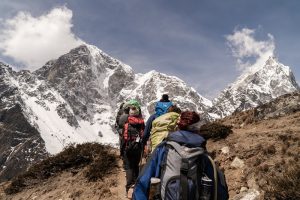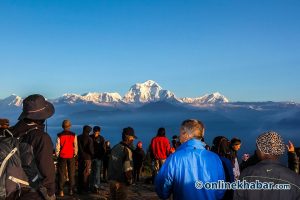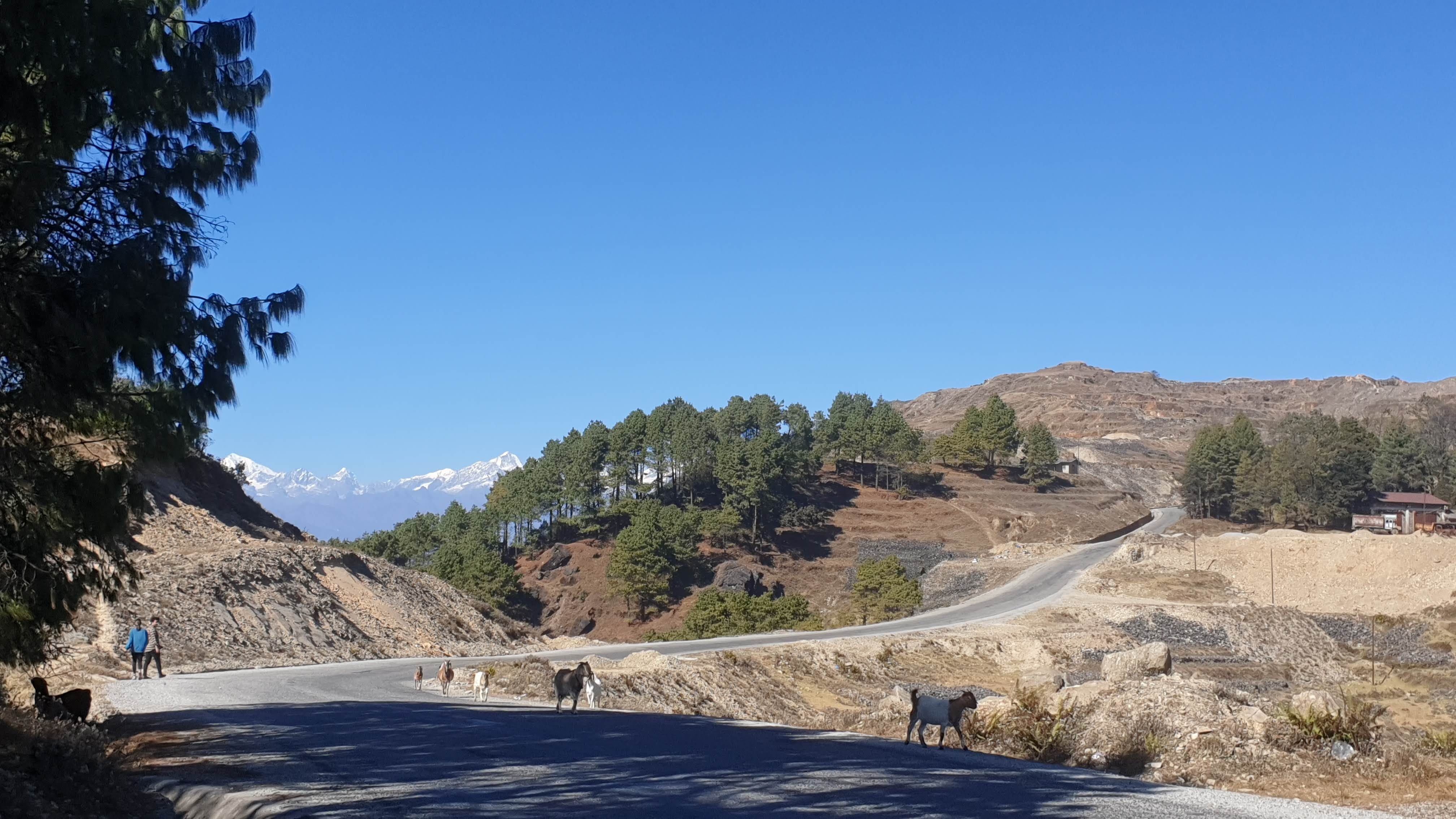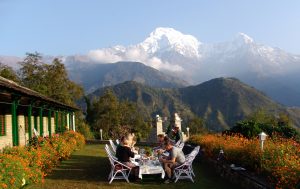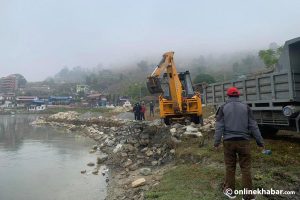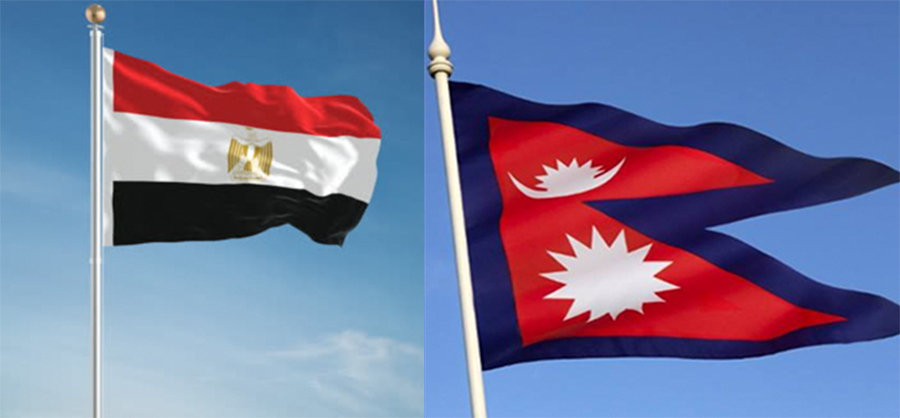
“Syau-dai,” with that word someone called. I turned around. A smiling young woman in her early twenties coyly bowed her head down before me as she uttered the word; a faint blush tinted her cheeks. I did not even know who she was. I took a little courage and asked and learned that she was a distant cousin. That was in Dolakha town. (Read the first part)
I had a guest, a Kathmandu friend, who’d tagged along to spend his holidays. We were in Dolakha, my ancestral home, to watch the Khadga Jatra (sword festival) celebrated annually during Dashain celebrations. As we took a tour of the town, more ‘syau-dais’ came my way and I had to do the same when I ran into my seniors.
One big family
My friend seemed thrilled to bits to watch the trading of syau-dais every once in a while. Every newcomer to the town is—as this ritual seems like clockwork automata as it were the entire town was like one big family and you were amidst them. And this seemingly unusual phenomenon finds its answer if we backtrack a little in time.

In the yesteryears, the remoteness cut off Dolakha from the rest of Nepal, and it got virtually confined to its own four walls—so were the marriage practices. And for this reason, boys and girls wedded each other from among the scanty population. Eventually, family ties developed as the lineage came either from the father or the mother. With the advent of roads and better communication, the migrating trend to cities boomed amongst the later generations. This brought in its wake a spread in marriage practices sweeping far and wide with kinship ties to Kathmandu and the rest of the country.

History
The town of Dolakha, with its humble setting and fetching landscapes, unspoiled countryside, lush forests, and the towering hills under the shadow of lofty snow-clad peaks the likes of Mount Gaurishankar, has always held a lasting appeal to the holidaymakers.
Behind this modest façade, the little town, however, hides behind a deep-seated history, a past enigmatic era rich in tradition, religion, and cultural heritage. For the entire Dolakha district (2,191 square km), named after this small nondescript town, speaks for its vibrant old days.
As cobbled alleys and pathways crisscross the town, almost every street corner seems to hold a shrine reminiscent of Kathmandu city. Well planned as a city during the Malla era (1,200-1768 AD), not surprisingly, Dolakha earned its name as a city of temples.
History has it that after a trade link was established between Tibet and India as far back as the reign of Amshuverma in the Lichhavi period (early 7th century), Dolakha rose to prominence as one of the transit points via Kuti in Tibet to Kathmandu valley and eastern Nepal.
As a district, Dolakha annexes Solukhumbu and Ramechhap in the east, Sindhupalchok in the west, Ramechhap in the south, and China (Tibet) in the north. History reveals that Dolakha served as an independent state and saw the rule of the Kirants, the Lichhavis and ultimately the Mallas until the unification of Nepal brought in by King Prithivi Naryan Shah. The Malla King bowed down to the firepower of the Gurkhas without a shot being fired or a sword raised.
Once a thriving city and a trade route to Tibet until the end of the Malla era, historians believe that in 1534 AD, King Jaya Indra Singh of Dolakha initiated the first-ever silver coins of Nepal to facilitate trade with Tibet. They also claim that the first coins of Kantipur (Kathmandu) came later in the reign of King Mahendra Malla, subsequent to the death of Jaya Indra Singh. This historic house which served as the ancient taksar (mint) still exists at a place called Dandathok.

Relics and temples galore
As cobbled alleys and pathways intertwine the town, almost every street corner seems to hold a temple authentically evocative of Kathmandu city. After a tour of the town, what strikes a visitor, especially a Kathmanduite as strange, is to find almost all the major Hindu temples of Kathmandu in the town. Shrines such as the Pashupatinath, Bajrayogini, Harisiddhi, Narayan, Manjushree, Rato (Red) Machhindranath, Taleju Bhawani (Rajkuleswor), Ganesh Mandir and many more, enhance the town’s image as a repository of Hindu temples matching that of the ancient Kantipuri Nagari (Kathmandu).
Curiously, for a small town, apart from a horde of Hindu temples, stupas and domed chaityas (chortens) also make their presence felt as you explore further. “According to folklore, these stupas date back more than 800 years and are said to have been founded by the Malla rulers,” says Shanta Krishna Shrestha, a senior resident of Dolakha. The presence of those Buddhist relics in Dolakha reflects the coexistence of diverse religious customs and beliefs in the olden times.

No different from Kathmandu
Steeped in age-old traditions, the little Dolakha is also marked by a score of festivals, redolent of Kathmandu. One of the most celebrated is the Khadga Jatra (sword festival, also celebrated in Kathmandu). Come Dashain, the entire town comes alive, and the ancient ritual is carried out, in full pomp and pageantry as the town buzzes with festivity from dawn to dusk with kith and kin streaming in from Kathmandu and other cities to enjoy happy reunions with their families.

Other notable festivals similar to that of Kathmandu and Lalitpur include Kumari Jatra, Indra Jatra, Hile Jatra, Gai Jatra, and Rato Machhindranath Yatra, among others. Once, every year, the colourfully decked out Rato Macchindranath chariot is steered across the entire town of Dolakha amidst a cacophony of sight and sound as the crowd tugs at the rope recreating the same vibe when the festival is celebrated in Lalitpur.





Dolakha’s flagship
Dolakha’s identity lies with its most prized possession, and venerated deity, the Bhimeswor. Outsiders associate the little town with God Bhimsen, the second born of the Pandavas, said to possess the strength of 10,000 elephants. Situated northeast of the town on a knoll, the Bhimeswor temple is believed to have been built in the 7th century AD.

Characterised by unique roofless architecture, the temple houses the deity not in the form of a robust idol, but simply as a nine-inch tall stone effigy resembling a lingam. Entwined by a gilded metal snake, the sacred black stone carries a small nick at the top. A 15-foot tall stone column said to be carved out from a single rock stands at the entrance of the shrine. A bronze idol of a lion rests on the top. Several other shorter columns stand around the temple ground.

Bestowed upon with three avatars (incarnations), namely the Bhagawati, Shiva, and ultimately Bhima or Bhimsen, the mythological god of Mahabharat, the puja rites are performed correspondingly to appease the triumvirate deities.
The legendary Bhimsen is also consecrated as the god of trade and commerce by business communities. Widely held as a holy pilgrimage, the devotees to the shrine include Indian nationals too. “Dolakha saw this trend from days beyond recall, even when no roads connected the town, and people had to walk for more than 15 days from Kathmandu,” the local priest at the temple explained.
The visits to Bhimeswor intensified after the Lamosanghu-Jiri Road came into operation. Today, devotees by the score swarm the shrine, especially on Fridays, Saturdays, Tuesdays, and the town turns abuzz with activity. If you ask the Kathmandu residents, surprisingly, most seem to have already visited the shrine, some even several times. Young motorcyclists can be seen in bands arriving on Fridays to stay the night, pay their homage, take a tour of the town and leave the next day or the day after.
Sweating spells
The stone effigy of Bhimeswor is known to go into bizarre sweating spells, portending a national crisis or disaster. The idol is said to have perspired profusely preceding the colossal earthquake of 1934 AD (1990 BS), the independence from Rana rule in 1951 (2007 BS), the demise of Panchayat government in 1990, and the royal carnage of June 1, 2001, at the Naryanhiti Palace, to cite a few.
End of Part II




